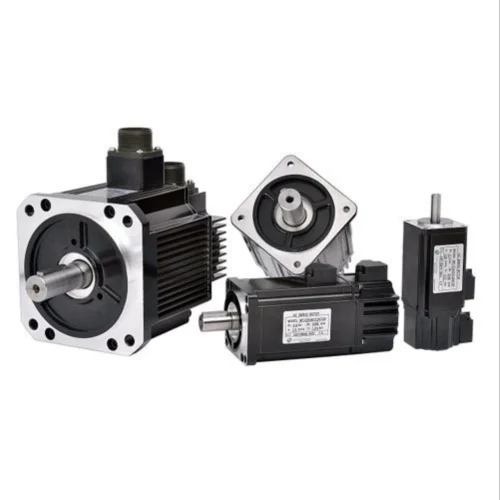
What is a Servo Drive?
A servo drive is an essential component in a closed-loop motion control system. It receives command signals typically for current, velocity, or position and compares them with feedback from the servomechanism. Based on this comparison, the servo drive outputs the appropriate voltage and current to the servo motor to correct any deviation and maintain accurate control of movement.
Understanding the Servo System
A servo system comprises four core components:
-
Servo Motor: Provides torque and velocity for moving the load. Typically rotates 180° and comes in types such as linear, continuous rotation, and positional rotation. Technologies include AC brushless, brushed AC/DC, and permanent magnet motors.
-
Servo Drive: Acts as a bridge between the controller and the motor. It amplifies command signals from the controller and ensures accurate motor performance through feedback comparison.
-
Servo Controller: The system's brain. It calculates motion trajectories and issues command signals to the servo drive. Interfaces with high-level controls like PLCs and CNCs.
-
Feedback Device: Measures actual motor status (speed, position, torque) and sends feedback to the drive and controller. Examples include encoders, resolvers, and Hall Effect sensors.
These elements communicate through cabling and digital protocols such as EtherCAT and CANopen.
How Does a Servo Drive Operate?
The servo system operates on a closed-loop control principle:
-
A command signal is sent from the controller to the servo drive.
-
The servo drive amplifies and forwards the signal to the motor.
-
The feedback device reports actual motor conditions.
-
The drive compares actual vs. commanded values and makes real-time adjustments.
This process ensures precise torque, speed, and position control, unlike open-loop systems that lack feedback correction.
Key Elements of a Servo Drive
-
Power Stage: Receives input power (AC/DC) and uses transistor H-bridge topology to drive the motor.
-
Control Loops: Govern torque, speed, and position. Advanced drives use all three, enabling complex motion profiles.
In operation:
-
The drive compares input commands with actual feedback.
-
If there's a difference, it adjusts voltage/current accordingly.
-
Once the desired motion is achieved, the system holds until the next command.
Main Functions of a Servo Drive
-
Command Signal Processing: Converts low-power commands into high-power signals for motor control.
-
Closed-Loop Feedback Adjustment: Uses encoder/resolver feedback for real-time corrections.
-
I/O Processing: Handles analog/digital inputs for mode control, safety, and diagnostics.
Types of Servo Drives
Servo drives vary by:
-
Electrical Ratings: AC/DC input, single/three-phase, voltage/frequency range.
-
Features: Auto-tuning, diagnostics, fault alarms, braking options.
-
Interface Options: Manual switches, PC interfaces, USB/SD card storage, wireless/web-enabled controls.
-
Mounting Configurations: DIN rail, panel, PCB, standalone, or IC chips.
Control Loop Support:
-
Torque-Mode Drives: Control torque via input current.
-
Velocity/Position Drives: Provide full motion control.
Commutation Type:
-
Trapezoidal and Sinusoidal: Determines motor compatibility ( BLDC motors).
Conclusion
A servo drive is more than just a power amplifier; it is a precision motion control device essential to high-performance automation systems. It bridges the gap between logic-level control and mechanical action, ensuring that servo motors operate exactly as commanded. By leveraging closed-loop control, servo drives provide unmatched accuracy in positioning, speed, and torque making them indispensable in robotics, CNC machines, conveyors, and more.
Contact PLG Automation
Email: sales@plgautomation.com
Phone: 800-906-9271
